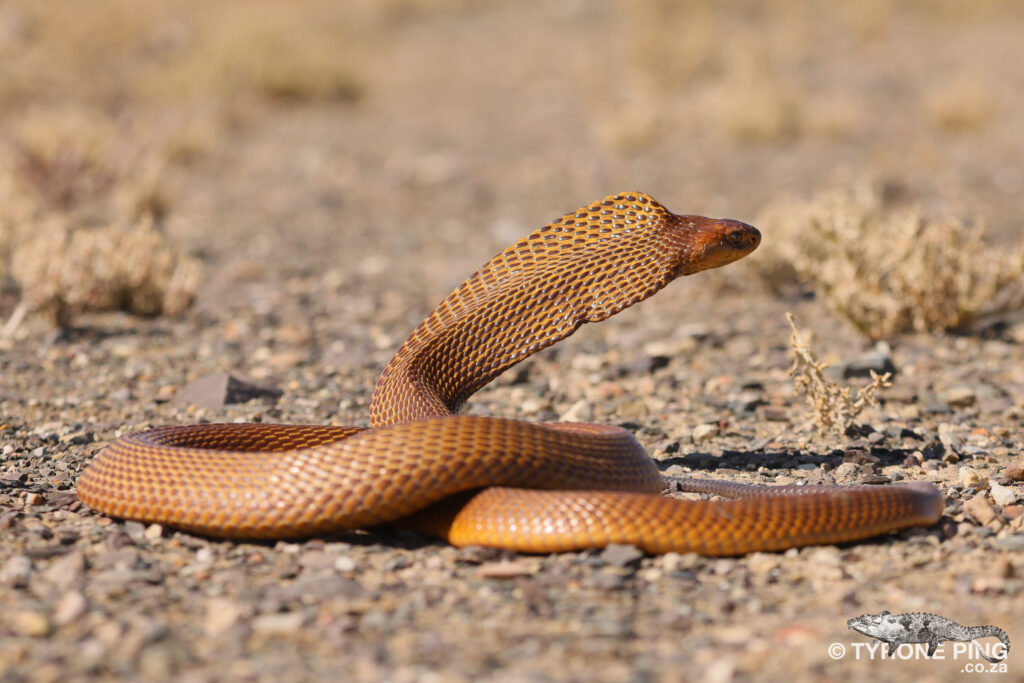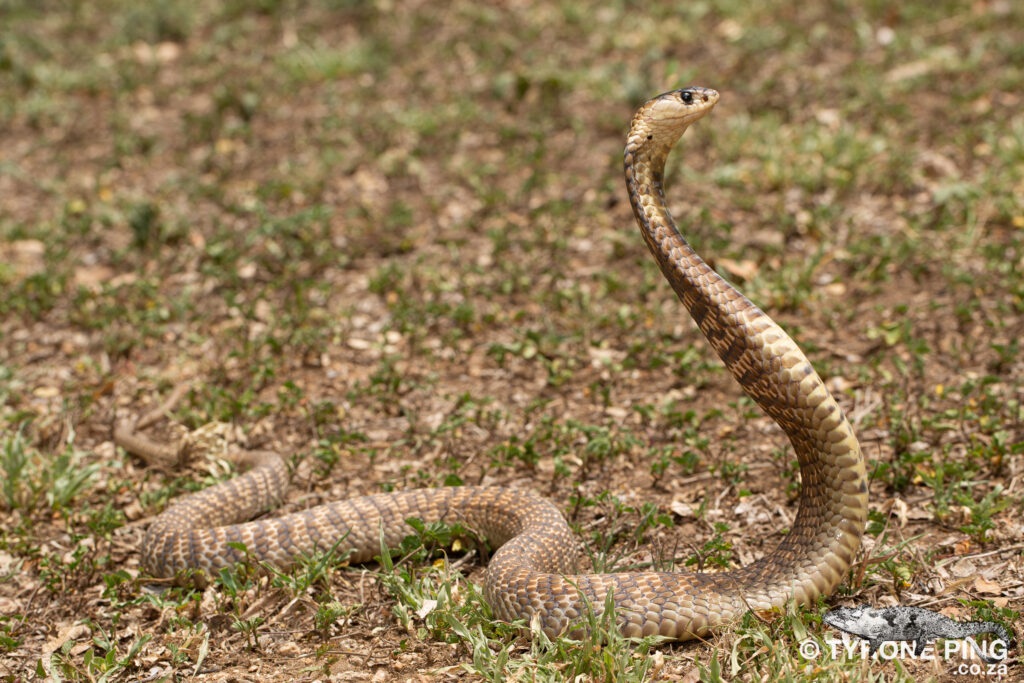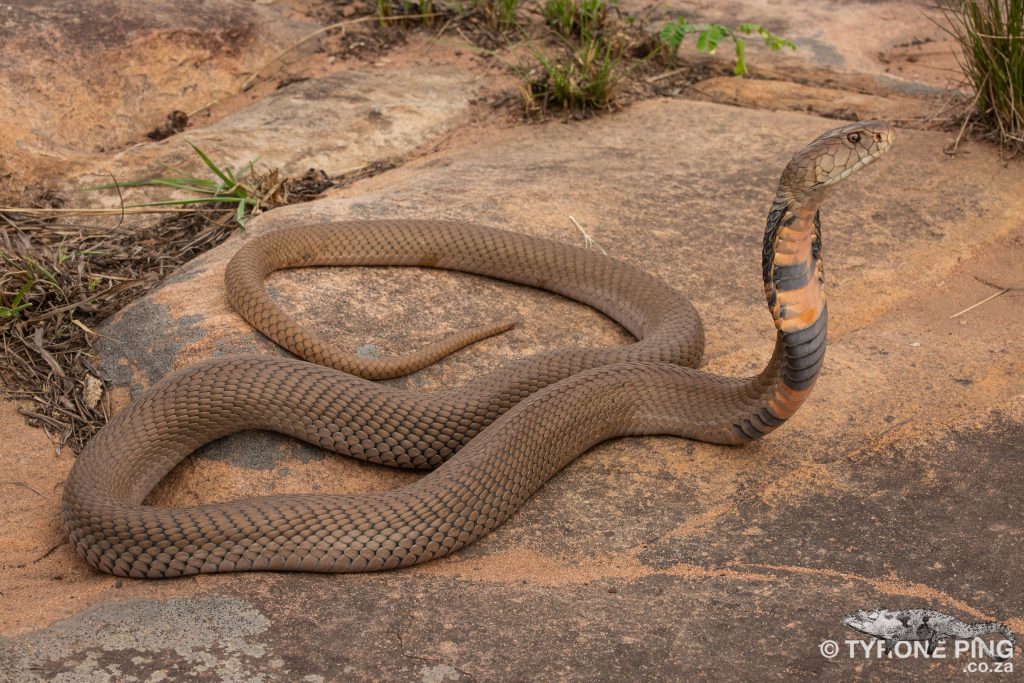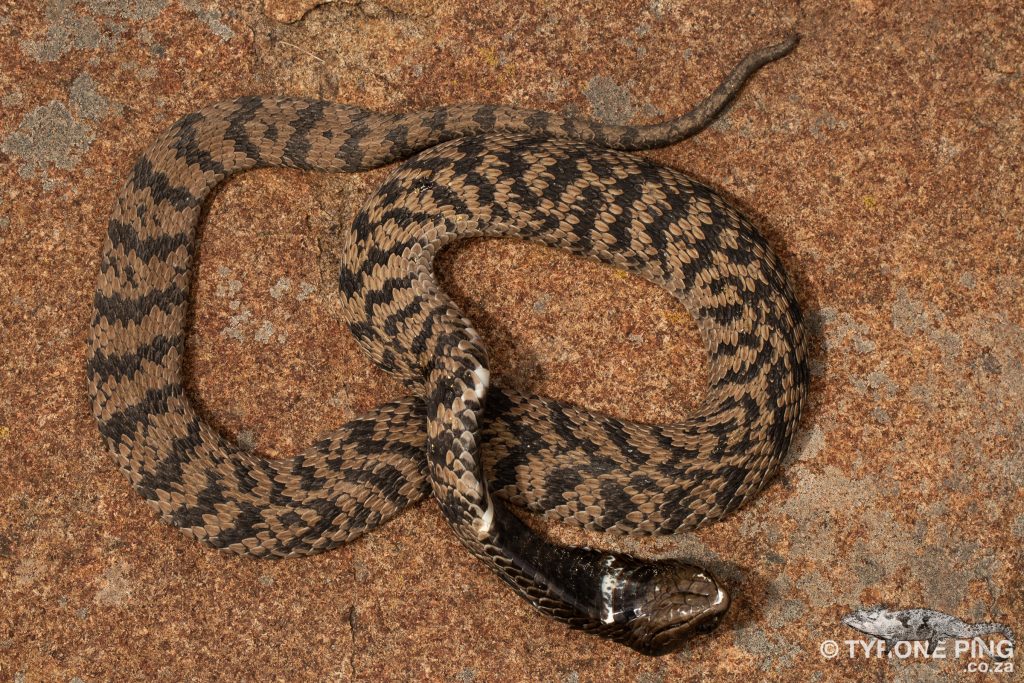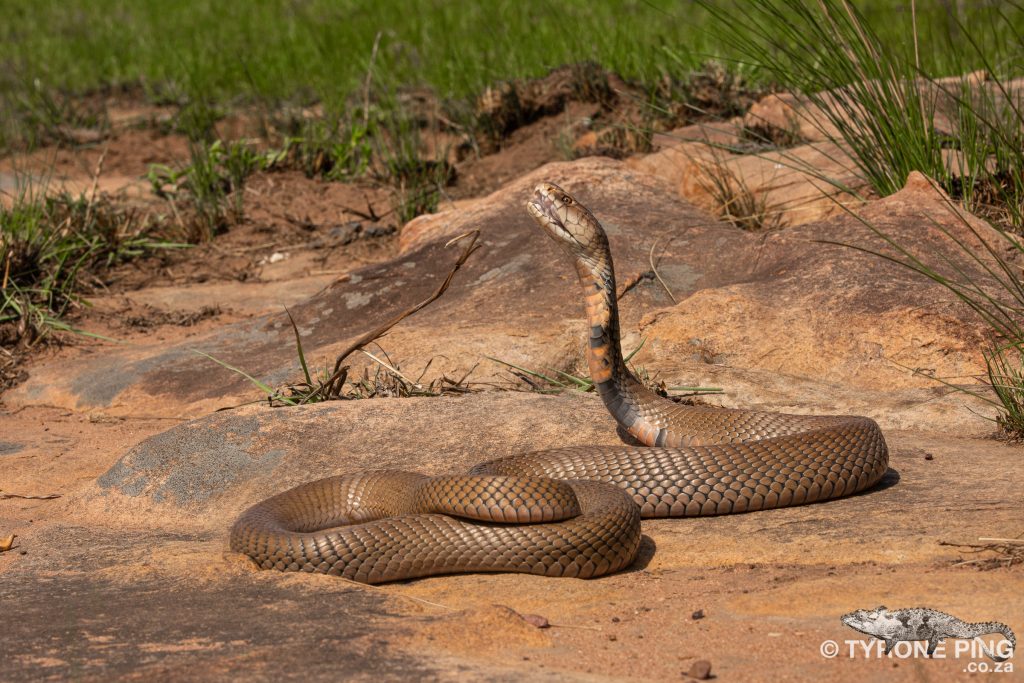Cobra vs Rinkhals: What’s the Difference?
Cobra vs Rinkhals: What’s the Difference? When it comes to venomous snakes in Southern Africa, the cobra and the Rinkhals are often confused — and understandably so. Both can raise their forebodies and spread a hood in a threat display, and both are highly venomous. But despite their similarities, cobras (genus Naja) and the Rinkhals (Hemachatus haemachatus) are distinct in several key ways. In this article, we break down the differences between these two fascinating snakes in terms of taxonomy, behaviour, appearance, distribution, and venom.
1. Taxonomy: Different Genera
The most fundamental difference lies in their classification.
-
Cobras belong to the genus Naja. Southern Africa is home to several species, including the Mozambique Spitting Cobra (Naja mossambica), Snouted Cobra (Naja annulifera), Cape Cobra (Naja nivea), Eastern Forest Cobra (Naja subfulva) and Black Spitting Cobra (Naja nigricinta woodi)
-
The Rinkhals, on the other hand, is a monotypic species in South Africa. Its scientific name is Hemachatus haemachatus.
Although both belong to the family Elapidae, they are genetically and evolutionarily distinct.
Cobra vs Rinkhals: Difference – Rinkhals
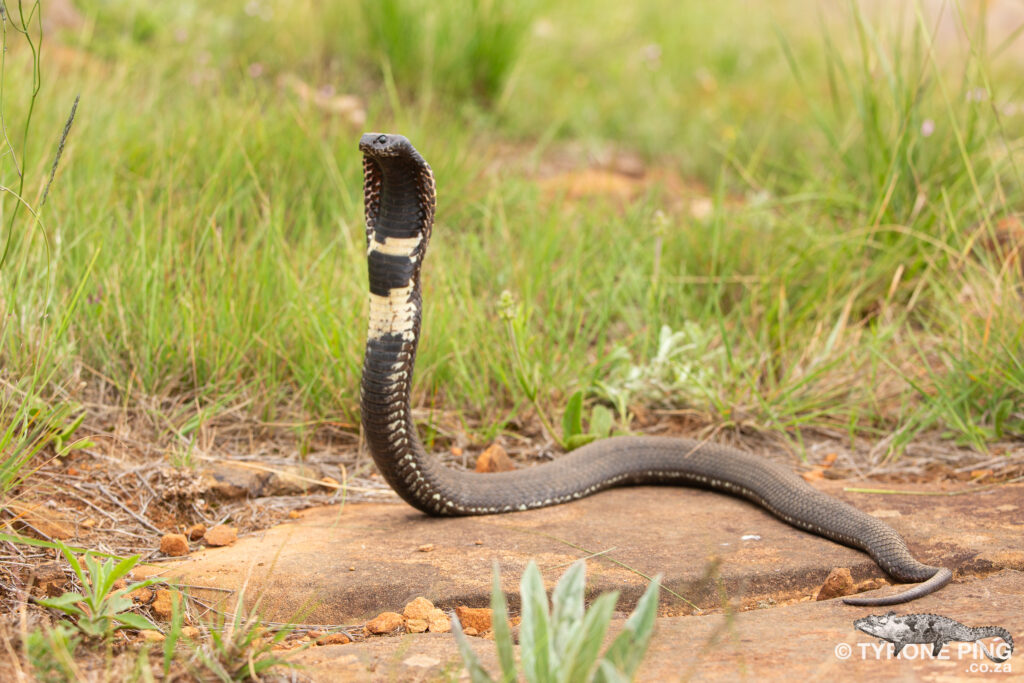
Hemachatus haemachatus
Rinkhals in standard dark form with pale throat bands.
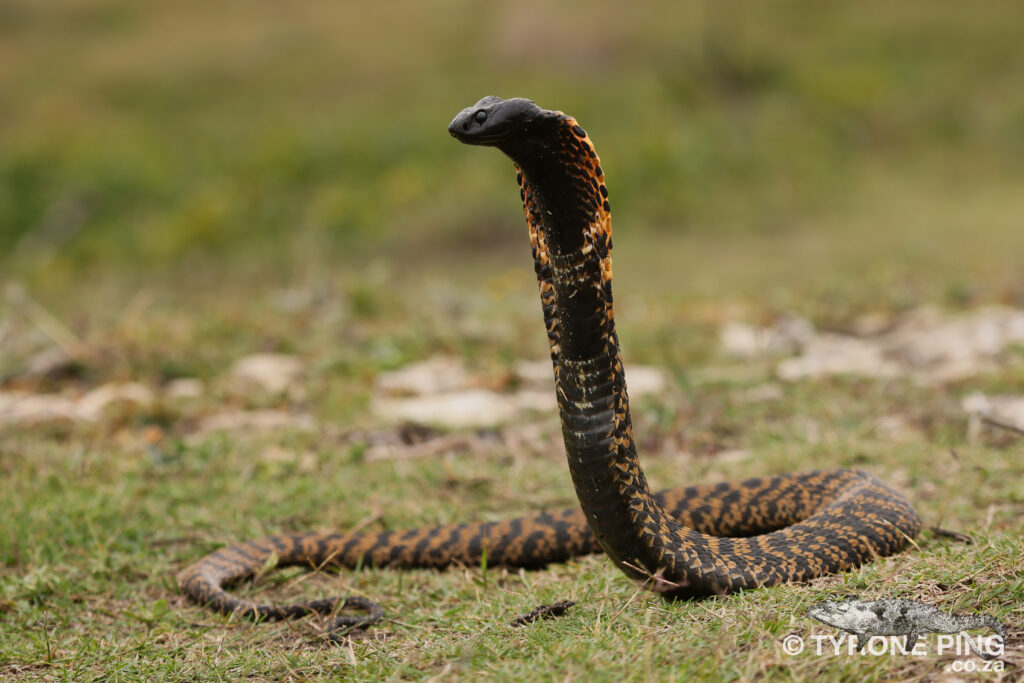
Hemachatus haemachatus
Rinkhals in banded variety also with throat bands visable
Cobra vs Rinkhals: Difference – Cobra
2. Appearance: Spot the Difference
At a glance, it’s easy to mistake a Rinkhals for a cobra — especially when it rears up and spreads its hood. But closer inspection reveals some key differences.
| Feature | Rinkhals (Hemachatus) | Cobras (Naja) |
|---|---|---|
| Size | 90 cm – 1.5 m | Can exceed 2 m, depending on species |
| Scales | Keeled (rough-textured) | Smooth |
| Colour | Black or brown with one or more pale crossbands on the throat | Varies greatly; e.g. Cape Cobra is uniform yellow to dark brown, Mozambique Spitting Cobra is often greyish with black banding under the throat |
| Hood Markings | Two pale bands on throat are visible when the hood is expanded | Some may have speckles/dark colours while others are plain |
| Hood Spread | Moderate | More extensive, especially in larger species |
3. Venom and Spitting Ability
Both cobras and Rinkhals are venomous, but there are key differences in how and what they deliver.
Rinkhals:
-
Can spit venom accurately up to 2.5 metres.
-
Venom is primarily cytotoxic (damages tissue), with some neurotoxic effects.
-
Known for “playing dead” behaviour — it may play dead when threatened.
Cobras:
-
Some species spit venom (e.g. Mozambique Spitting Cobra and Black Spitting Cobra), while others do not (e.g. Cape Cobra, Snouted Cobra, Eastern Forest Cobra).
-
Venom composition varies:
-
Neurotoxic in species like the Cape Cobra.
-
Cytotoxic and neurotoxic in other species.
-
-
Do not all feign death but has been recorded in several species but is certainly not the norm.
4. Behaviour and Defence
The Rinkhals has a more diverse set of defensive behaviours:
-
Feigning death: It may roll over, open its mouth, and lie still as if dead.
-
Spitting venom: A primary defence mechanism aimed towards the head/face.
-
Hooding and hissing: Like cobras, it will raise its forebody and spread its hood when threatened.
Cobras, while equally defensive, rely more on:
-
Hooding and hissing: A strong visual deterrent.
-
Spitting (if capable): Directed at the head/face of potential threat.
-
Biting: A last-resort defence that can be extremely dangerous.
5. Habitat and Distribution
Rinkhals:
-
Endemic to Southern Africa.
-
Found in grasslands, wetlands, and montane areas in parts of South Africa, Eswatini, and Lesotho.
-
Can tolerate a wide array of habitats include transformed farmlands.
Cobras:
-
Wider range across Africa, and some species in Asia.
-
Southern African species inhabit savannahs, forests, arid regions, and human settlements, depending on the species.
6. Reproduction: Eggs vs Live Birth
This is one of the most significant biological differences.
-
Cobras lay eggs (they are oviparous).
-
Rinkhals gives live birth (it is viviparous), typically producing 20–40 live young in late summer.
Conclusion
While the Rinkhals and cobras may look and act similarly at times, they are quite different once you dig a little deeper. The Rinkhals is a unique species with fascinating behaviours like death-feigning and live birth, whereas cobras comprise a broad genus with a diverse range of sizes, colours, and habitats.

